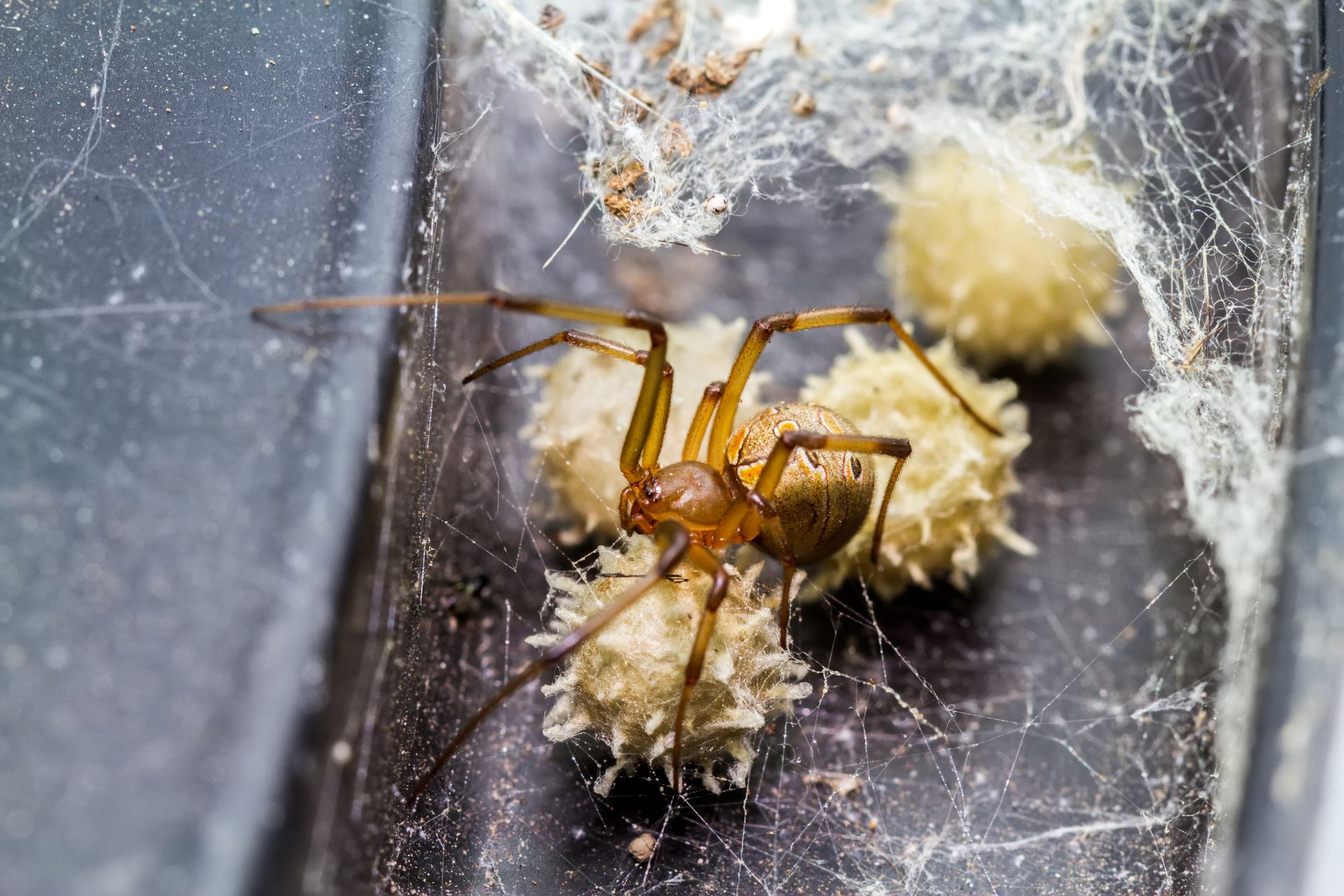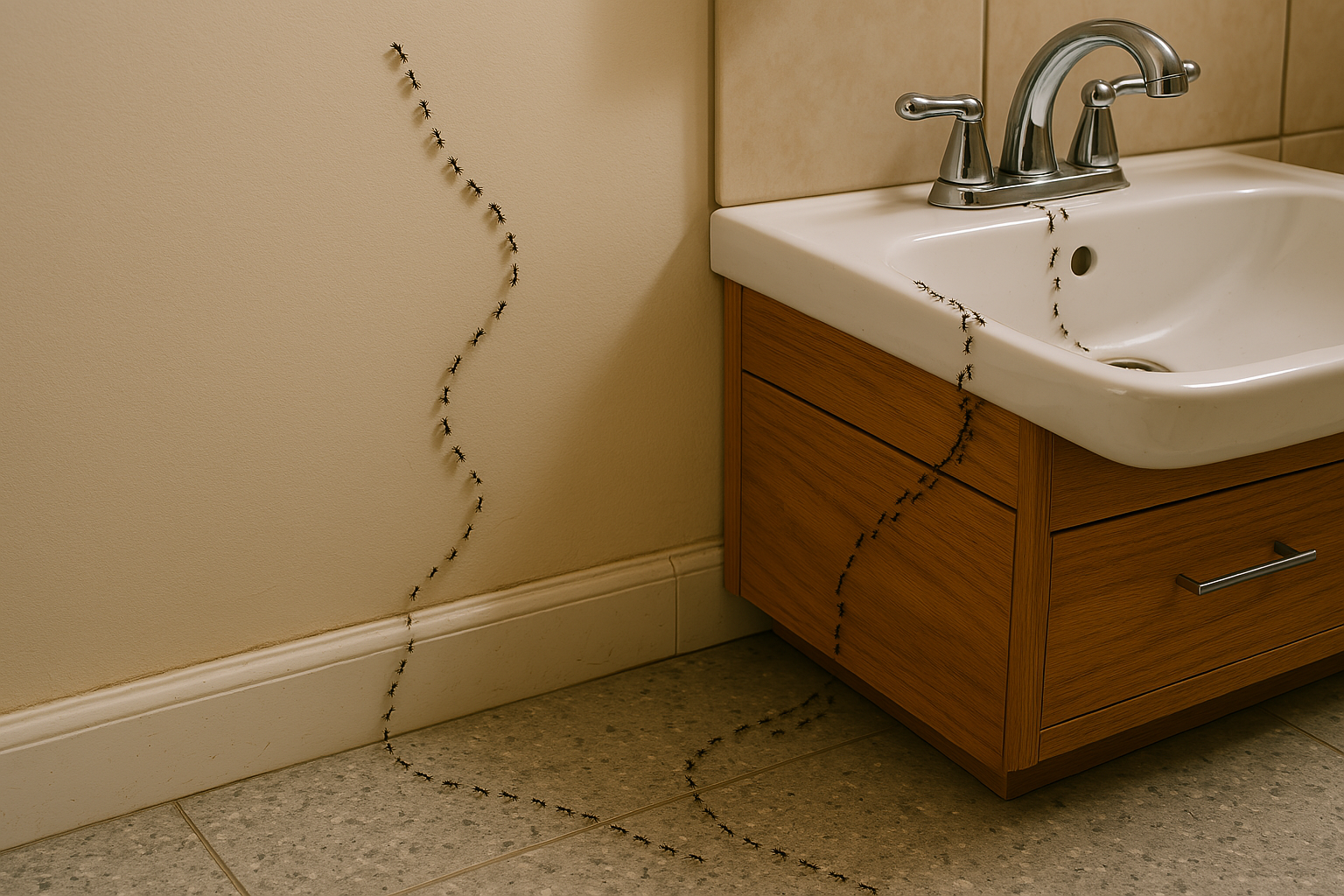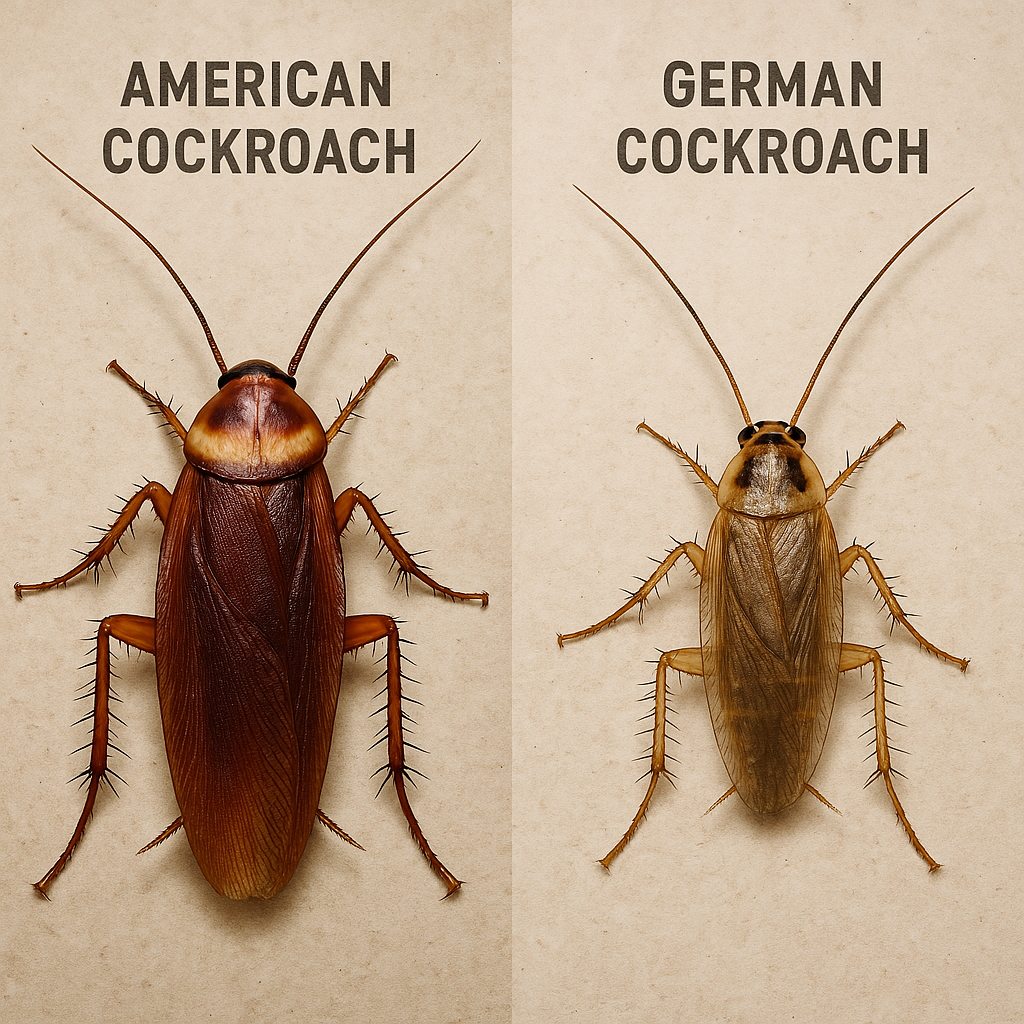Do Spiders Lay Eggs in the House?

Spiders that inhabit homes are generally harmless to humans and often feed on bugs which help keep pest populations down. However, once they find their way into a household, spiders begin laying eggs which can lead to infestations of their own. Unlike other insects, spiders typically lay their eggs inside of a silk egg sac. This sac is usually hidden within a web, attached to a surface somewhere hidden, or carried by the female spider. A single spider can generate multiple egg sacs during their lifetime with each egg sac capable of containing several hundred eggs. The sac itself is woven out of silk and is generally about the same size as the spider. Understanding these aspects of spider reproduction can be instrumental in preventing spider infestations in homes. By recognizing where spiders lay their eggs and what their egg sacs look like, homeowners can effectively identify potential spider problems before they escalate. It is important to remember, while most household spiders pose no threat to humans, being aware of their habits and life cycle can help decide when to initiate pest control efforts.
Do Spiders Lay Eggs?
Spiders are a common pest across the United States that procreate through the process of laying eggs. The method of egg-laying among spiders involves the creation of egg sacs, within which the eggs are contained. Therefore, spider eggs are rarely seen in isolation. These egg sacs are frequently mistaken for parts of the spider web due to their appearance and typically look like a tiny pearl. They house a substantial number of eggs, ranging from dozens to hundreds depending on the species of spider. It's important to note that these eggs are typically not laid on animals or exposed in open spaces as spiders prefer secure and concealed areas to ensure their eggs remain safe during development.
Why Do Spiders Lay Eggs in a Sac?
Spiders protect their eggs within eggs sacs to assist with incubation and prevent exposure to elements and predation. It also helps the eggs from becoming dehydrated or overheating which can cause the eggs to become inviable eggs. Even with this protective barrier, the eggs contained inside egg sacs can become infected with parasites like wasp and fly larvae that will consume the eggs and spiderlings as they hatch. To increase the likelihood of successful eggs, female spiders may increase the number of egg sacs they lay which utilizes a redundancy safeguard that helps the survival of a spider’s genetics.
How Do You Identify Spider Egg Sacs?
Identifying spider egg sacs is usually easy given most spider egg sacs look like small white pearls that are encased in silk and hanging in the threads of a spider’s cobweb. That being said, different species’ egg sacs may differ in size, color, and location. While most spider egg sacs are relatively small, some may be as large as a grape and contain several thousands of eggs. Another indicator is the coloration, with most egg sacs being white which is the color of spider silk. However, there have been egg sacs observed that are brown, light green, or yellow. The location of an egg sac varies with the type of spiders, with most being found inside the web but others being found underground or foliage.
Where Do Spiders Lay Eggs?
Most spider species will lay their egg sacs somewhere hidden where it will remain safe from potential threats like parasites and the elements. Some spiders will suspend their sacs in their web while other species may attach them to a surface using silk or carry them around with them until they are ready to hatch. The type of web that holds the egg sac is usually a good indicator of the spider species. Notable web types include orbs, cobwebs or tangles, funnels, sheet webs, and wooly webs.
Spiders may also seek various indoor or outdoor habitats to place their egg sacs. Indoors, spiders will typically select areas that are not frequently disturbed like dark, damp, and secluded areas in attics, garages, or basements. Outdoors, spiders can place their egg sacs in places like woodpiles, building overhangs, under stones, organic debris like leaf piles, or any concealed place near your home. Some specific habitats include burrows (trapdoor spiders), under bark (huntsman spiders), in the web (black house spiders), in a curled leaf (leaf curling spiders), suspended on a line (two-tailed spiders), or hidden among foliage (orb weaving spiders).
When Do Spiders Lay Eggs?
Spiders are adaptive creatures and have evolved to survive and reproduce in diverse environments. This adaptability to human-tolerable conditions allows spiders to benefit from stable temperatures, providing them with a continuous reproduction cycle that lasts year-round. For many spider species, especially those found indoors, there are no specific seasons for laying eggs given that the indoor climate and environment is maintained by human habitation.
How Many Eggs Do Spiders Lay?
The number of eggs laid by a spider varies greatly depending on the species. Common house spiders typically lay their eggs in sacs that contain around 100 eggs. Other spider species are known to lay up to 2,000 eggs within a single sac. Among the more prolific egg-layers are brown and black widow spiders which can produce between 10 to 20 egg sacs throughout their lifetime with each sac accommodating between 150 to 300 eggs. The overall range for most spiders typically lies between 100 to 4,000 eggs in their lifespan, with each egg sac containing between 30 to 300 eggs. It's crucial to note, however, that despite these high numbers, the survival rate of spider eggs tends to be quite low.
| Spider Type | Number of Eggs Per Sac | Number of Egg Sacs |
|---|---|---|
| Wolf spiders | 100+ | 1 - 2 |
| Brown recluse spiders | 40 to 50 | 5 |
| Black widow spiders | 255 | 5 |
| Yellow Sac spiders | 30 to 50 | 5 |
| Yellow Sac spiders | 30 to 50 | 5 |
| Hobo spiders | 50 to 100 | 1 - 4 |
| Daddy long legs | 50 | 8 |
| Orb-weaver spiders | 100 to 300 | 1 - 4 |
| American house spiders | 250 | 17 |
How Long Does It Take for Spider Eggs to Hatch?
The hatching time of spider eggs varies significantly depending on species and seasonal influence, but a rough estimate is typically around 2 to 3 weeks. Before the spiderlings leave the egg sac, they develop enough to undergo their first molt. This involves shedding their skin for the first time. Following this, the spiderlings start to make their exit and use their fangs to create an exit for them to escape out of.
What Happens When Spiders Hatch?
Some species of spiders keep their spiderlings protected near their nests for a few weeks while others will leave the sac and its spiderlings to fend for themselves after hatching. Upon emerging, the spiderlings tend to cluster near the sac and feed primarily on the remnants of their yolk sac. As they grow, they gradually begin to disperse to stake out their territories. Dispersal techniques are largely determined by the species and their environment and influence how far the spiderlings travel. Many spiders that are web builders utilize a method called "ballooning." This process requires that the hatchlings spin a silk thread that is caught by wind to help disperse the spiderlings. This dispersal is crucial to prevent competition for resources among the spiderlings, which helps prevent sibling cannibalism.
Other species, such as ground and burrow-dwelling species, disperse by walking relatively short distances. While other spider species that dwell in foliage employ methods like "bridging". Bridging involves climbing through foliage and then dropping down on a silk line, often swinging across to adjacent branches with the help of a breeze.
How to Tell if Spider Egg Sac is Empty?
You may encounter an empty spider egg sac due to two primary reasons: infertility or successful hatching. Empty sacs which are made entirely of silk, will move when air flows over them. Therefore, an ease-of-movement test like gently blowing on the sac, can sometimes indicate whether it's empty. Moreover, an empty sac will often lose its original flawless cocoon or spherical shape because the emerging spiderlings have disrupted its structure. These egg sacs will typically exhibit a visible hole, or you might notice the sac is deflated with young spiderlings nearby.
How to Remove Spider Eggs?
There are various ways to eliminate spider egg sacs. Simple DIY solutions can be effective in managing spider egg sacs. You might try spraying the sacs with a solution of water and bleach, cleaning them up with a vacuum cleaner, or applying oil-based pesticides. However, remember these solutions typically address the visible sacs and may not tackle a more extensive infestation hidden in various locations around your house. If the infestation becomes overwhelming or if numerous baby spiders start to appear in your home, it might be time to contact professional pest control services to manage the issue thoroughly and effectively.
How to Prevent Spiders from Infesting Your Home
In order to prevent spider infestations in your home, there are several proactive measures you can take. One crucial step is to seal all cracks and openings in the foundation, walls, doors, and windows of your home. This will act as the first barrier and deter spiders from entering your house. The 2nd barrier should be a perimeter application of chemical pesticides that will kill spiders on contact. Additionally, decluttering your home, property, and garage is critical because spiders tend to nest in dark, protected spaces such as wood piles and cardboard boxes.
Pay attention to your property's landscape as well. Trim hedges and trees leaning onto your house because spiders can use these plants as bridges to enter your home. Similarly, it's advised to avoid keeping mulch, woodpiles, compost, and rocks near your house to discourage spider infestations.
Finally, hiring a professional pest control service for regular inspections can be a cost-effective and efficient way to manage and prevent potential spider problems. Expert pest control technicians can assess your property for unique pest issues and provide targeted solutions, thereby saving you time and potential frustration from less effective DIY products.
Contact EcoGuard if You Are Dealing with Spiders
Managing spiders involves proactive measures and informed choices and you don't have to face a spider problem alone. For comprehensive, effective, and stress-free solutions to spider control, reach out to EcoGuard Pest Management. Our team of pest control experts will help you keep your home spider-free, ensuring your safety and peace of mind. With our knowledge, experience, and commitment to customer satisfaction, you can confidently entrust your pest control needs to us. Remember, when it comes to spider control, EcoGuard Pest Management is just a call away.

















